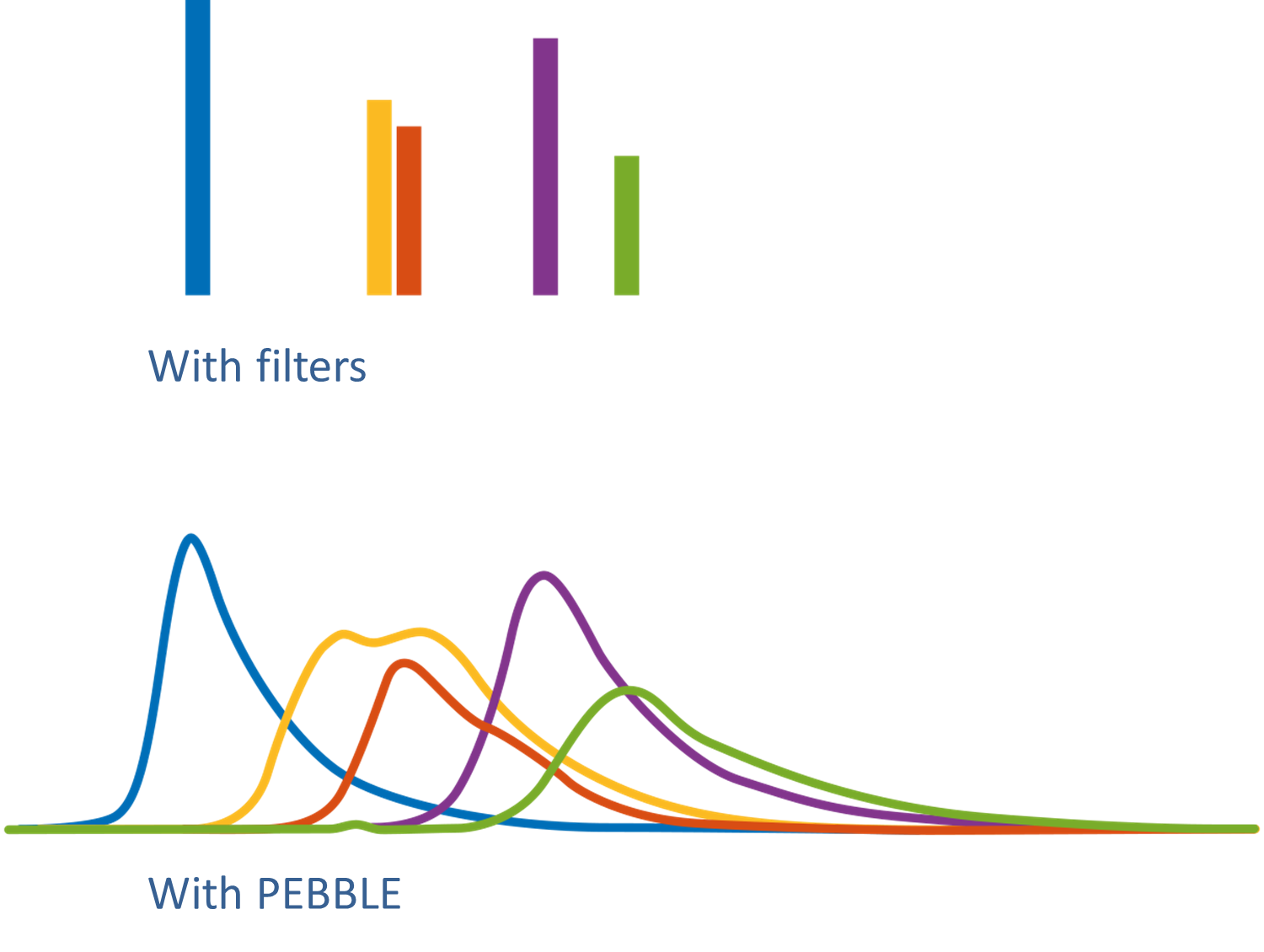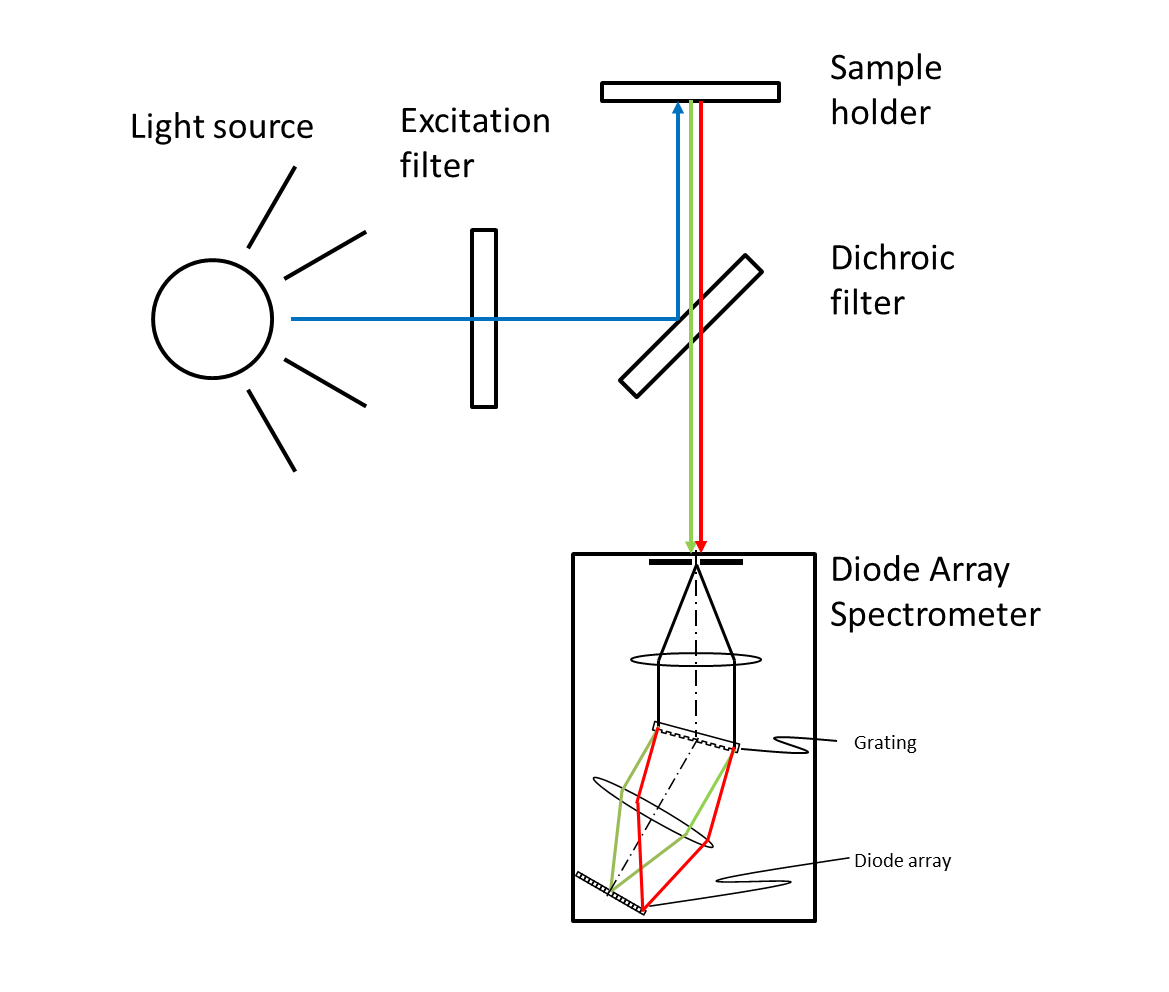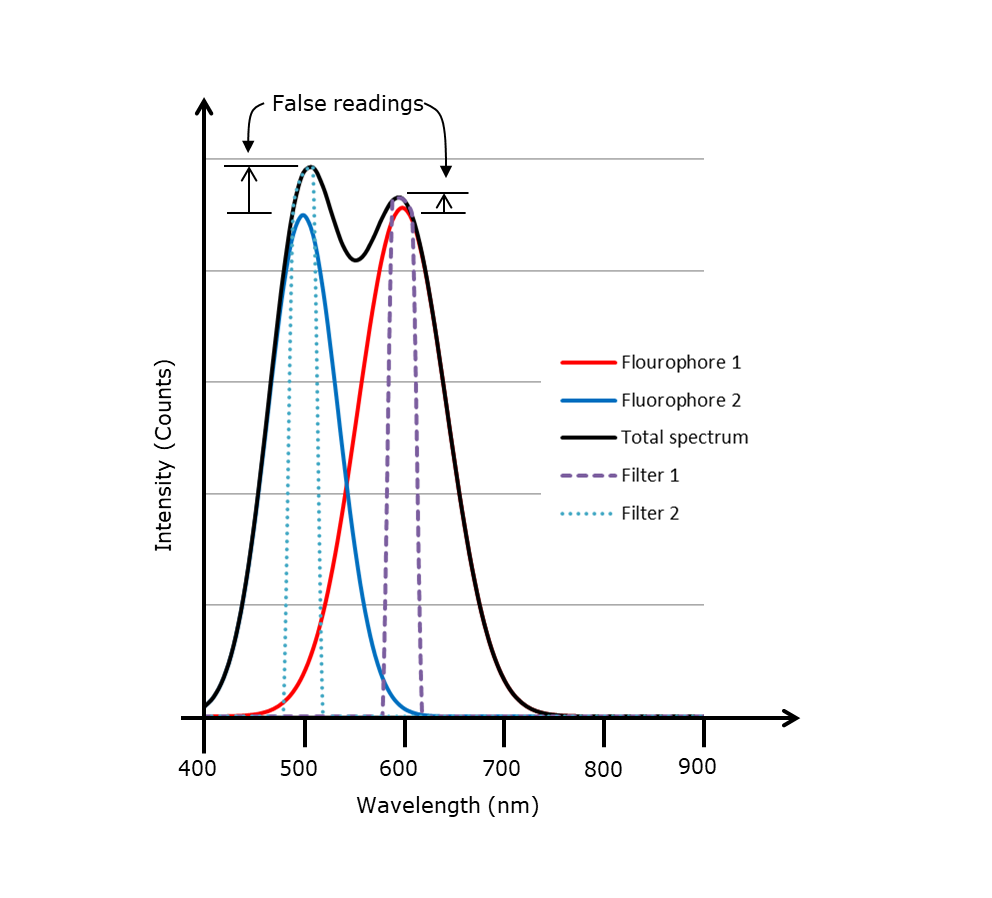Diode array versus filter-based spectrometers
Diode array spectrometers are typically lower cost and less complex if you need 3 or more filters in your photometer.
If you are building a spectral sensor for fluorescence spectroscopy, you are likely considering whether you should use either filter-based photometers or diode array spectrometers. The former will measure light intensity at one or a few specific wavelengths and the latter will measure the full spectrum as illustrated in the figure below.

On this page, you can find a general overview of how filter-based and diode array-based spectrometers are constructed. Also, we will list the key benefits and drawbacks of the two technologies such that you are better equipped to make the right choice for your project.
Filter based photometers
In a filter-based photometer, the wavelength selective components are optical filters and behind each filter, you need a photodiode detector. You need one filter-detector pair for each wavelength you want to measure as illustrated on the picture below for a 2 wavelength photometer. As you might imagine, the cost and complexity of such an instrument scale with the number of wavelengths. However, if you are only interested in 1 – 2 wavelengths it is a very simple and efficient method.

Diode array spectrometers
The wavelength selective element in a diode array spectrometer is a diffraction grating. And in this case, the detector is an array of photodetectors as illustrated in the picture below. The diode array detector will measure all wavelengths simultaneously, so the cost and complexity remain the same whether you want to measure 1 or 1000 wavelengths.

Cost and complexity
The key benefits of the filter-based photometer are its simplicity and low cost when you need to analyze only 1 or 2 wavelengths. However, it is generally agreed that once you move to 3 or more wavelengths a diode array solution like the PEBBLE VIS can be both lower cost and far less complicated.
Spectral deconvolution
In many cases, your spectrum from a sample might consist of several overlapping spectra. For instance, in case you have two fluorophores with overlapping emission spectra, you will get a false higher intensity reading at the two peak wavelengths as illustrated below.

In case you use a diode array spectrometer you will get hundreds of measurement points that you can use to decompose the spectrum into the spectra of the individual fluorophores.
In a similar manner you can use the extra information in the full spectrum to estimate and subtract things like background and Raman scattering in fluorescence spectra.
Especially for Raman and NIR spectroscopy multi-variate analysis methods (often denoted chemometrics) can be used to extra concentration information from complex spectra recorded with diode array spectrometers.
Want to know more?
For further information see below.